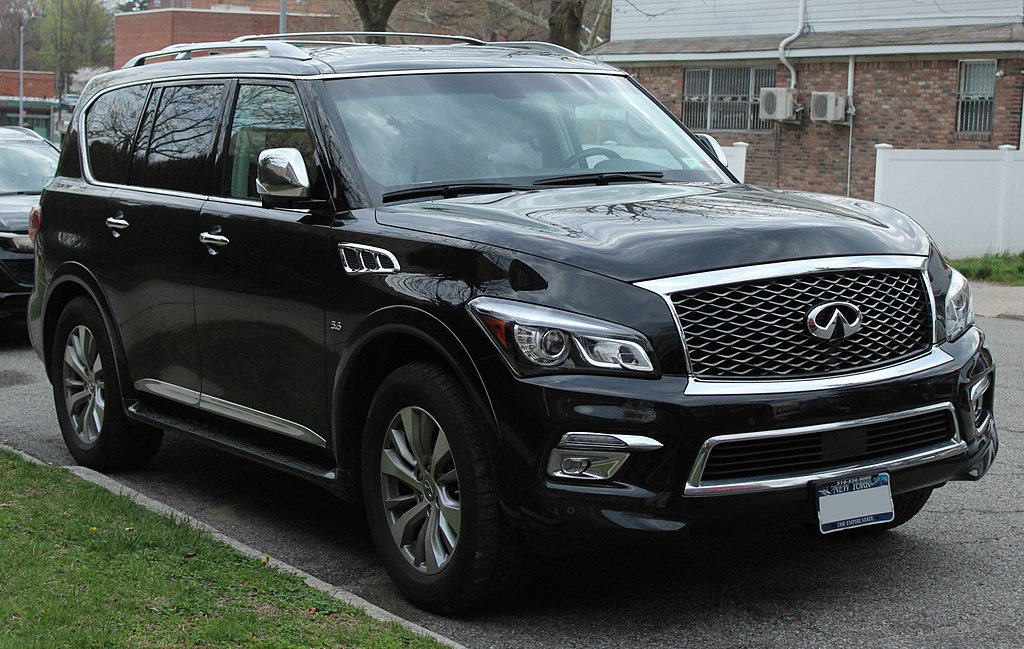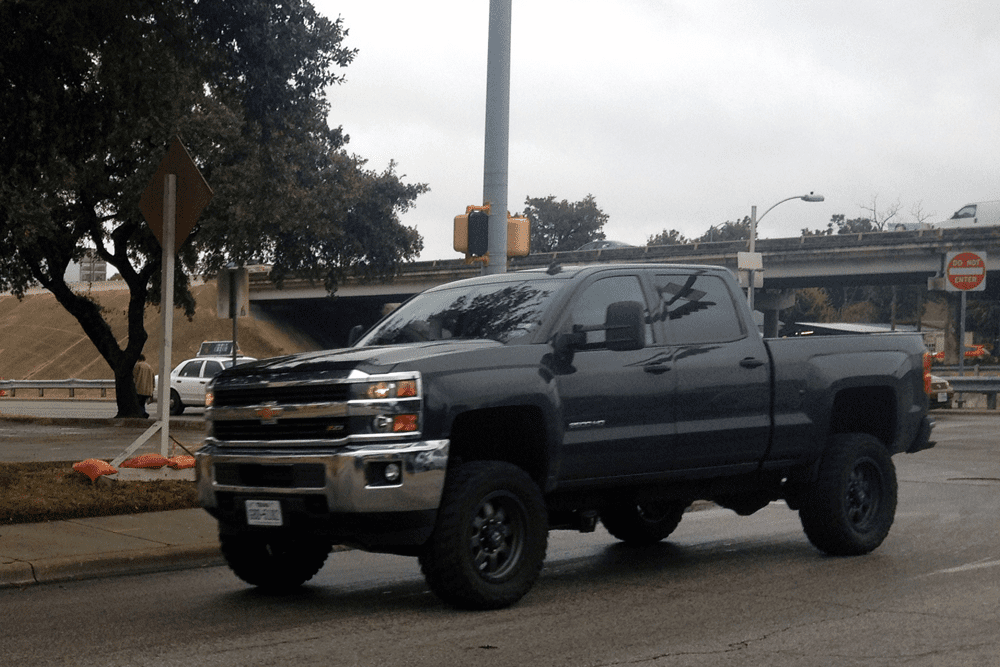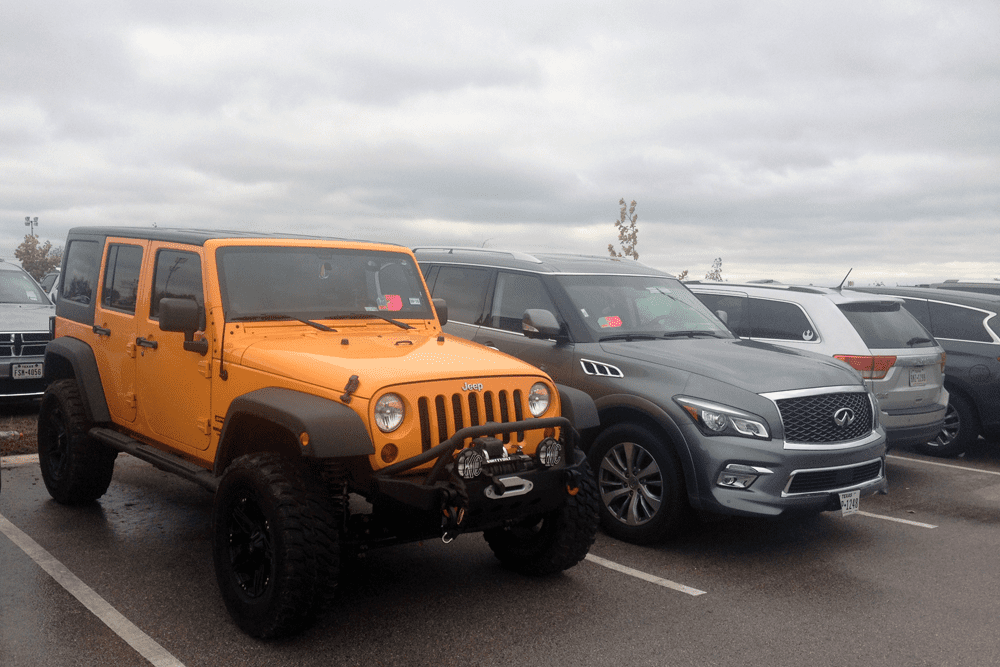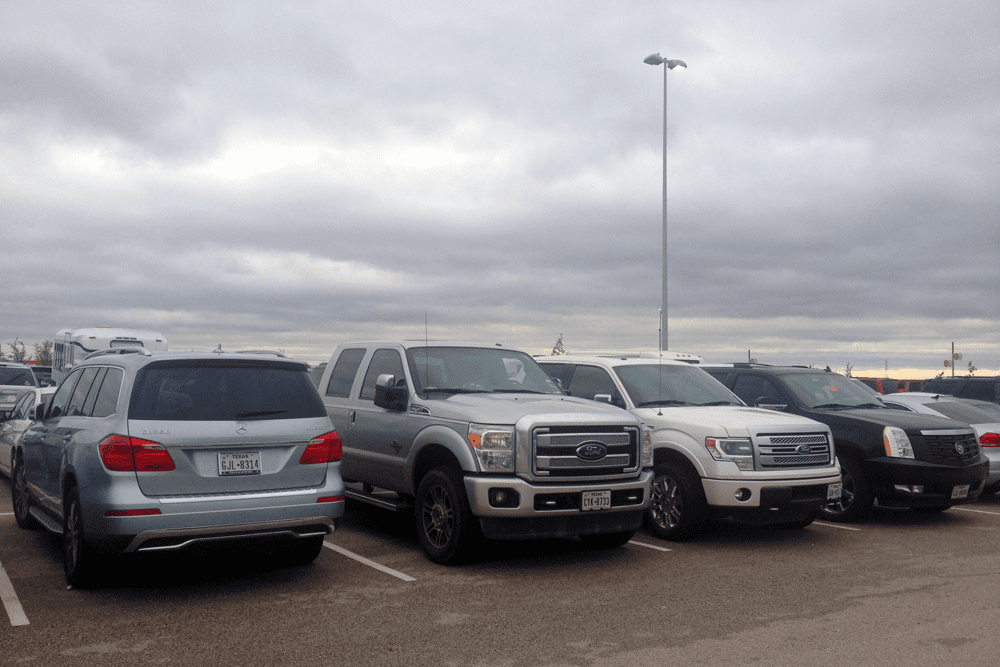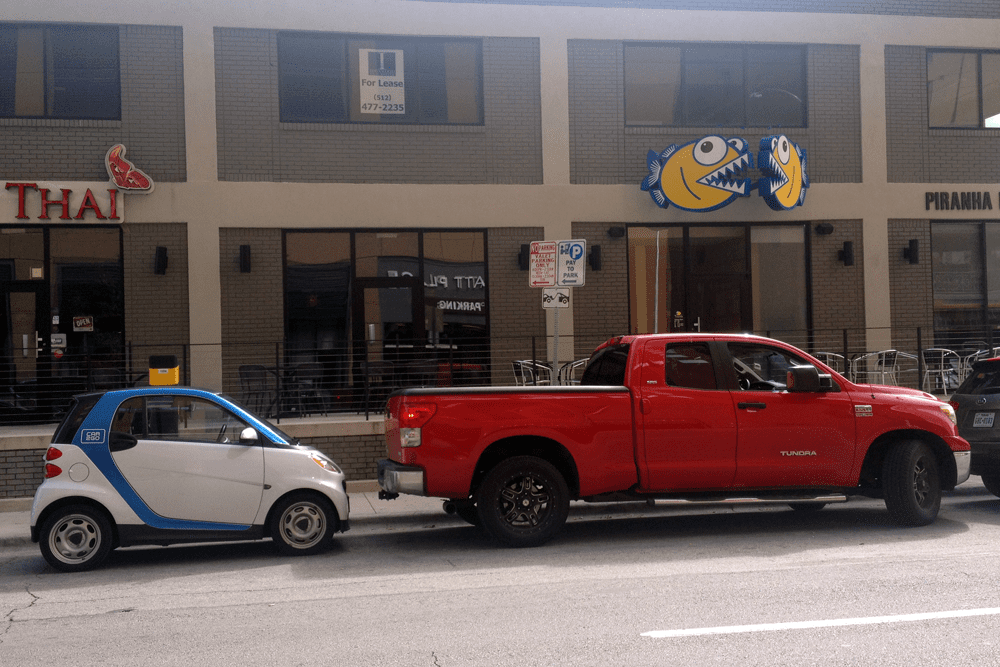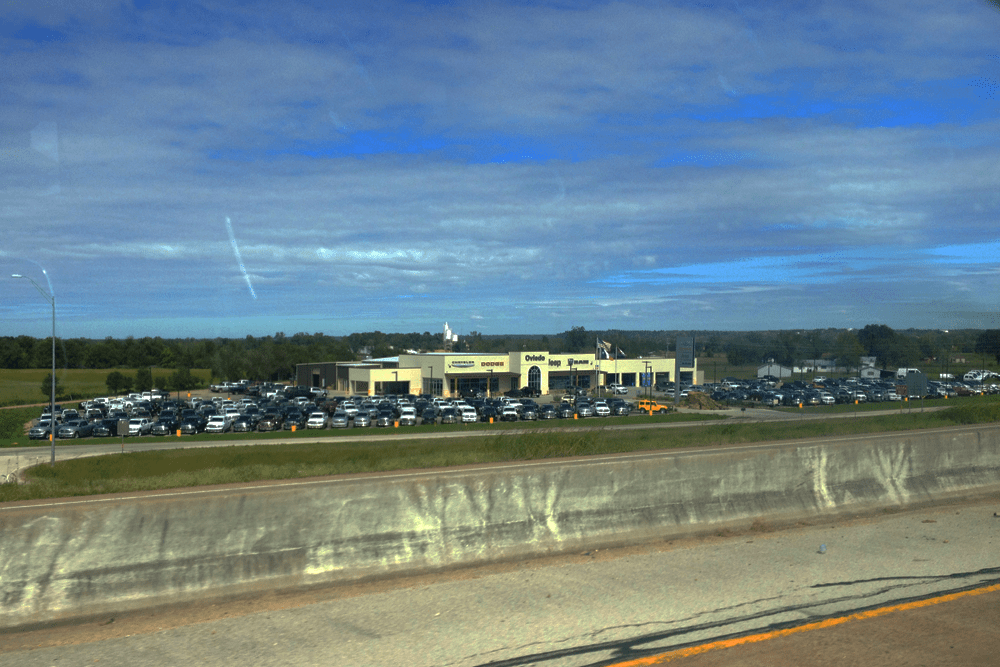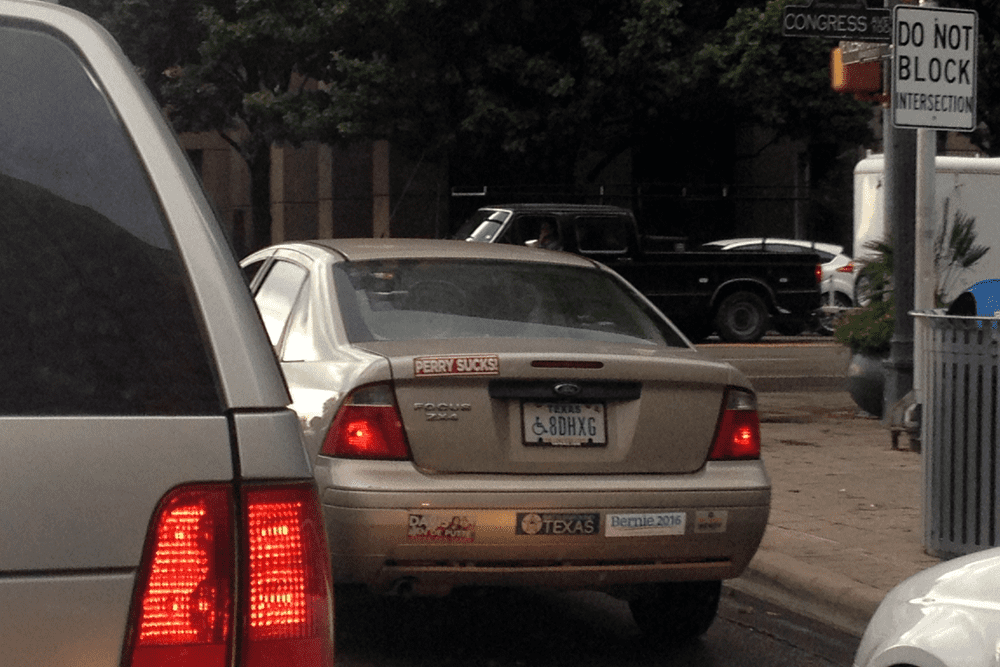In our series of car cultures around the world/international street scenes we’ve taken a virtual tour to Morocco, Africa, Monaco, Europe, Nagoya, Japan, Bali, Indonesia and Singapore, now we’ll cross the Pacific and the US West Coast to land in Texas. And the automotive landscape in Texas is exactly as you’d imagined: lots of huge SUVs and pick-up trucks, one bigger than the other but all big enough to dwarf a Range Rover. Gasoline is cheap, roads are wide and straight and towing a big trailer, boat or caravan happens in a few occasions, but mostly they’re just big “because we can”.
As a result of this preference for bulky trucks and SUVs, the domestic US brands are more popular in Texas than in other parts of the United States, most notably the import-dominated East Coast (especially New York City) and West Coast (especially California). What did strike me in regards to import brands was the relative large number of midsized body-on-frame trucks like the Nissan Xterra and Toyota 4Runner, I’d almost say I saw one of each in just about every street of Austin. The Toyota FJ Cruiser must have also been popular in Texas, but not as extremely as in Dubai, UAE as you’ll see in the next report of this series. Other import models with an over-representation in Texas are the Nissan Pathfinder and the Infiniti QX80, and of course the Toyota Tundra full-sized pick-up truck. Sedans like the Toyota Camry and Honda Accord, among the best sellers in the nation, are much less omnipresent than in the rest of the country, but still no rarities.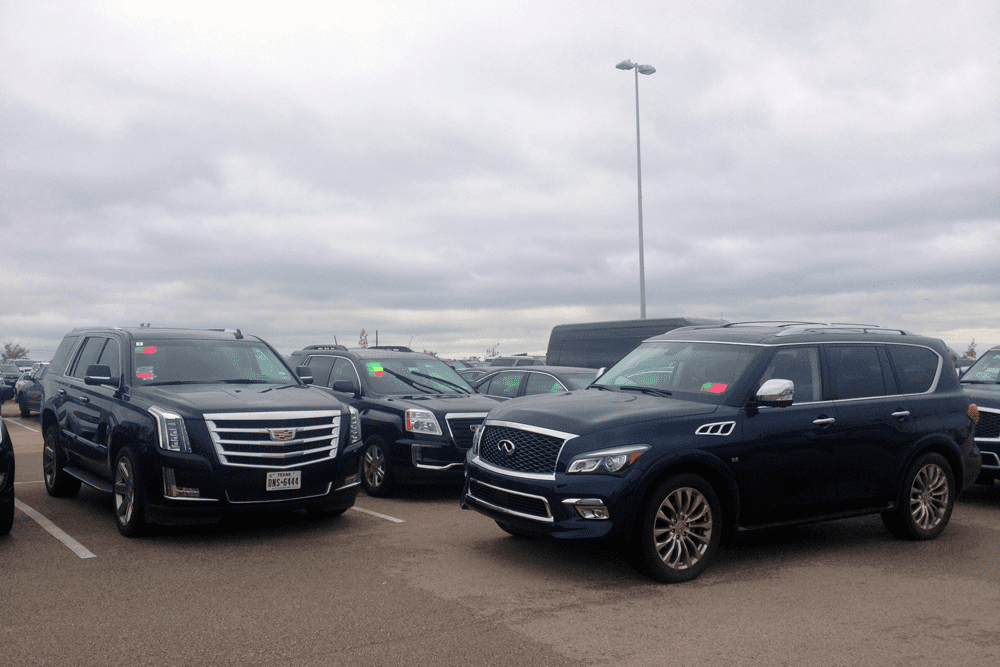
For the rest, it’s Chevrolet Silverado, Ford F-series, RAM pick-up and GMC Sierra galore, and to a slightly lesser degree their SUV siblings Chevrolet Tahoe and Suburban, Cadillac Escalade, Ford Expedition and Lincoln Navigator, and GMC Yukon/XL. So the question whether FCA should finally join the profitable market of full-sized SUVs gets a decidedly firm “yes” in Texas. The Jeep Grand Cherokee and Dodge Durango are almost considered too small for Texans. The Jeep Wrangler is a better match, proven by its popularity, especially lifted and fitted with big off-road tires.
The European cars on the roads in Texas are mostly the German luxury brands, especially (of course) their SUV offerings, but also a quite a few performance offerings from AMG, Audi RS and BMW M. I even spotted an Alpina B7 which I hadn’t even seen in real life in Europe before. The Mercedes-Benz GL seems pretty popular in Texas, but even that model, which is considered big in Europe, is sometimes made to look small between the American trucks.
Austin also has a car sharing program from Car2Go, operated by Daimler with the previous generation Smart Fortwo. There were quite a few of those running around, but if you see how small they are compared to most of the other cars on the road, and the bad condition of the pavement in some parts of the city and the highways, I can’t imagine it feel very safe or comfortable in Texas.
Even the car dealerships in the US are quite a lot bigger than they are in, say, Europe. That’s got to do with the habit of American car buyers to buy a car “off the lot” as opposed to ordering a car from a brochure, built to the exact specifications of the buyer, who then waits for a few weeks to even months on his new car, as mostly happens in Europe. This means that an American dealer needs to stock up more cars in order to make sure he has the right car on the lot for as many potential buyers that walk onto his lot. It’s not unusual for Ford dealer, for example, to have more than 100 different versions of its best selling model, the F-series pick-up truck, in stock. Different cabs, bed lengths, colors, 4×2 and 4×4, ranging from basic white work truck up to a fully loaded, $ 70,000 Platinum Edition. It all depends on how many he sells per month, as a 60-day (2 months) supply is considered healthy, which means if he sells 50 F-series a month, he’ll need to have around 100 units in stock. A lot less and he risks not having the right cars to serve all his customers, but a lot more than that will be costly in inventory (“floorplan”) financing.
And lastly I was surprised to see that bumperstickers apparently are still “a thing” among certain members of the community. I’ve never seen this phenomenon much outside the US, but I thought this was a thing from a bygone era. Yet I’ve spotted quite a few cars that had their rear completely plastered with political one-liners, protest messages and “proud parent of a … university student” stickers. I managed to take pictures of just two of them.
[envira-gallery id=”38903″]

